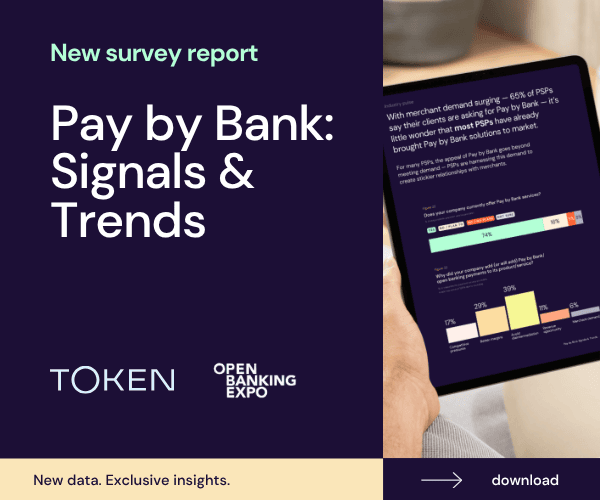

Q&A: Nova Credit’s Nikki Cross on why consumer-permissioned data is the future
Ellie Duncan | Insights, USA, Women In Open Banking
22 May 2025
In this Q&A with Nikki Cross, senior director of data science solutions at Nova Credit, find out why economic uncertainty is the biggest challenge facing underwriters currently, and her top three benefits of real-time access to consumer-permissioned transaction data.
1. Can you tell us more about Nova Credit – what is its offering to lenders?
Nova Credit is a credit infrastructure and analytics company focused on providing consumer reports built around consumer-permissioned data, with cash flow data underwriting being a huge part of our partnership with lenders.
The reality is half of American households live paycheck-to-paycheck, including a third of high-income households. Traditional credit data alone just doesn’t tell their whole story. We enable lenders to take a holistic underwriting approach that combines traditional credit data with real-time cash flow information.
For lenders, this means the ability to expand their addressable market, make smarter risk decisions, and create more inclusive credit opportunities.
This isn’t actually a new concept – it’s the oldest “new idea” in the book! Before credit bureaus existed, local banks were already using deposit information to make lending decisions and big banks with existing deposits often do the same. We’ve just modernized, democratized, and standardized that approach through technology and analytics.
2. What does your role at Nova Credit entail?
I’m the senior director of data science solutions at Nova Credit. I lead our solutions consulting function, serving as the bridge between our internal data science team and our prospects’ and clients’ data science and credit policy teams.

Nova Credit’s Nikki Cross
My day-to-day involves a mix of both the technical and the practical. I help lenders understand how to effectively use consumer-permissioned data, starting first with education and then working with them to build implementation strategies and policies that make sense for their business context.
What’s fun about my role is the breadth of organizations and use cases I get to be a part of. I work with everyone, from top five banks, to five-person start-ups, solving problems that span the credit spectrum and a variety of use cases. Figuring out how best to empower any given client to move forward in their alternative data exploration is important, as every institution will have different constraints, goals, and operating models.
The most rewarding part is seeing clients discover new insights in data they didn’t previously have access to and helping them build that into their lending programs in ways that expand financial opportunity.
3. What challenges are on the horizon for bank underwriters?
I believe the biggest challenge facing underwriters today is economic uncertainty. Many lenders are in recession-planning cycles, trying to understand what might be coming and how to prepare for more conservative growth should that be needed.
At the heart of all underwriting is using the past to predict the future. In times of quick change, both positive and negative, those expectations for the analysis simply don’t hold, creating numerous vectors of uncertainty. Adding to that concern, the underwriting decisions made prior to and played out during an economic downturn can make or break a company, creating heightened awareness of every decision.
Beyond the macro environment, most lending institutions face a catch-22 when implementing new data sources like cash flow. They want to modernize practices but hesitate to disrupt existing strategies. The integration isn’t simple; we’re talking about fundamentally different data structures that require new interpretation alongside traditional credit data.
Most organizations don’t have the internal expertise to build these capabilities from scratch, or the bandwidth needed to do it well. This journey can take three-plus years and require ongoing refinement as both technology and regulations evolve. Working with a partner who can help to accelerate that time to testing is imperative if you want to stay competitive in today’s lending environment.
4. In your view, what are the top three benefits of real-time access to consumer-permissioned transaction data for lenders?
If I had to narrow it down to the top three benefits of real-time access to consumer-permissioned transaction data, they would be:
First, it provides a real-time view of the consumer’s entire financial situation that’s simply unmatched by traditional credit sources. I always say, no-one cared more about cash flow data than a lender in April 2020! During economic shocks, when traditional credit data becomes instantly dated, cash flow data shows what’s happening today. You’re seeing direct evidence of financial behavior, rather than inferring it through trailing indicators.
Second, it creates a complementary view that pairs perfectly with credit data. Credit history shows historical willingness to pay, while cash flow reveals current ability to pay. The beauty of this combination is that you get a much more complete picture of financial health. That’s why lenders use both together rather than treating them as competing data sources.
Third, it enables financial inclusion by expanding credit access to underserved populations. This is especially powerful for thin-file consumers, or those new to credit, who might be disadvantaged in traditional credit spaces. When you can see someone responsibly managing their checking account with regular income and consistent payment of bills, you can make credit decisions for people who might otherwise be declined.
The common thread is that cash flow data provides that atomic, assumption-free view into someone’s financial life that helps lenders make better decisions – whether that’s approving more creditworthy customers, offering more appropriate terms, or acting more quickly when financial circumstances change.
5. Are there any data points missing from lenders having a full picture of their borrowers’ credit reports and what are the implications of this?
There are significant blind spots in traditional credit reports that have major implications for lenders trying to get a complete picture of their borrowers.
First, there’s the timing issue – credit reports don’t track delinquency until an account is 30-plus days past due, and many trades have payment grace periods. This means the first signs of consumer distress can easily be one to three months after a shock to the system. By then, it might be too late for early intervention.
Second, credit reports miss entire categories of financial obligations. Buy-now-pay-later (BNPL) transactions only recently started to appear on some credit reports, and even now, coverage is incomplete. The same goes for rent payments, utility bills, and subscription services – all meaningful indicators of financial behavior that typically don’t show up.
Third, credit reports tell you nothing about income stability or changes. A borrower might have lost their job yesterday, but that information won’t be reflected in a credit report until they start missing payments weeks or months later. Conversely, a consumer who’s gotten a raise or a new job might show improved financial positioning, but without additional access to credit, lenders can’t improve their product offerings.
The implications are substantial. Lenders make sub-optimal decisions – approving some customers who are higher risk than they appear and declining others who are more creditworthy than their reports suggest. This means missed revenue opportunities, higher than necessary credit losses, and customers getting the wrong products or terms for their actual financial situations.
That’s why I believe the future of lending will always be about combining multiple complementary data sources – with cash flow data playing an increasingly central role in completing the picture that credit reports alone can’t provide.
Nikki Cross is senior director of data science solutions at Nova Credit
Nova Credit is an Associate Partner of Open Banking Expo USA 2025. Catch Chris Hansen, general manager, Cash Atlas Solutions at Nova Credit speaking at Open Banking Expo USA on June 26, in New York. Find out more and get your ticket here.
Further reading: Entrata integrates Nova Credit’s ‘Credit Passport’ to improve access to housing









